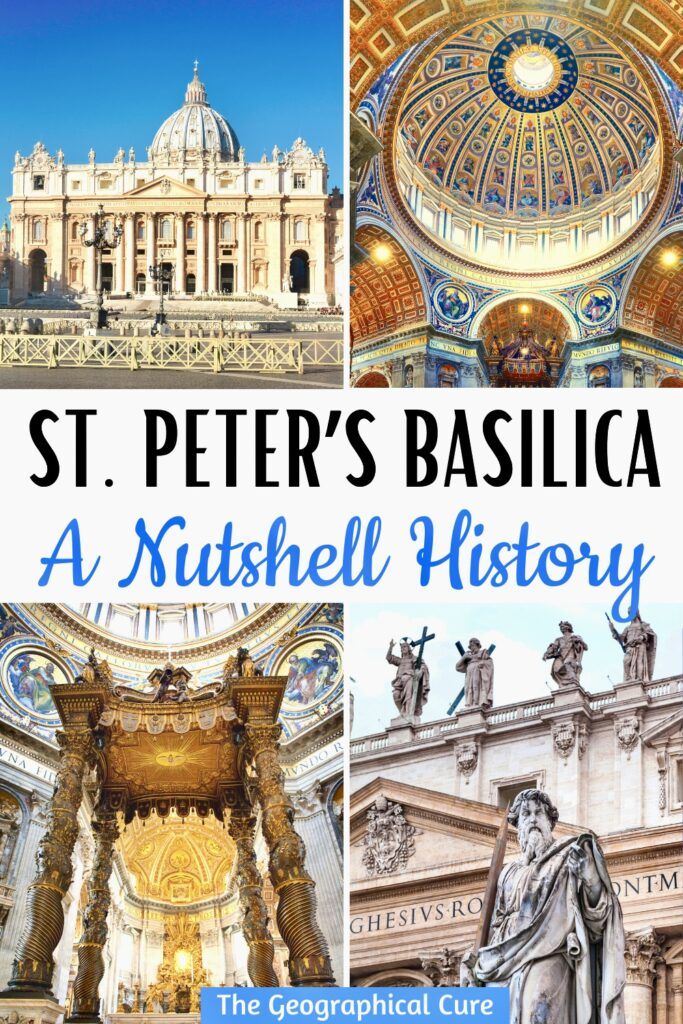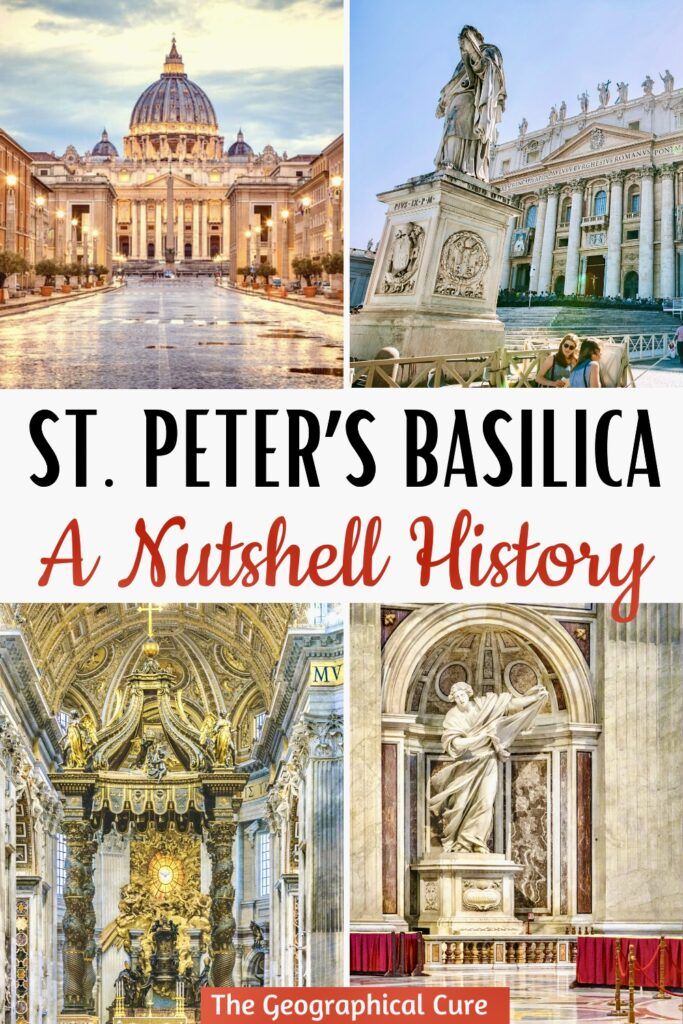St. Peter’s Basilica is the most famous church in Christendom. It took 8 different architects and 120 years to build.
The basilica is a stunning example of Renaissance and Baroque architecture. Its immense size, classical design, and intricate detailing make it a masterpiece of human achievement.
The current basilica was built between 1505 and 1626. The artists who worked on the St. Peter’s over the years are a veritable who’s who of the Renaissance and Baroque periods.
Repeated design changes were prompted by the push and pull of the popes, who had differing tastes.
In this guide, I give you a short history of St. Peter’s Basilica and the architects who made it happen.
1. Saint Peter
St. Peter’s Basilica is a beacon for pilgrims. The dome signals that this is where the tomb of the great Saint Peter lies.
Saint Peter was the first apostle to recognize Christ as the messiah. Head of Christ’s disciples and a prominent character in the New Testament, Peter was given the “keys to heaven.”
After Christ’s death, Peter led the founding of the Christian church and became the first pope.
According to tradition, St. Peter was imprisoned in the Mamertine Prison during the reign of the Roman Emperor Nero. This imprisonment is often associated with his martyrdom, when he was crucified upside down.
2. The Architect Bramante
In 1505, after a competition, Pope Julius II — the most ambitious artistic pope — commissioned the architect Donato Bramante to build a new basilica for Saint Peter.
Bramante was the most well known of High Renaissance architects. The pope sought to create the world’s most magnificent church.
To do this, Bramante had to demolish the Old St. Peter’s Basilica, built by the Emperor Constantine. Dating from 326, the old basilica sat on the circus of Nero.
The ancient church had to go. It was dilapidated and in a state of extreme disrepair. But it was demolished gradually as construction progressed, so that mass could still take place.
Bramante designed the initial plans for the new church. He proposed a Greek cross plan surmounted by an enormous central dome, surrounded by smaller domes and towers.
Bramante was aiming to combine architectural elements from two famous Roman monuments — the Pantheon and the Basilica of Maxentius and Constantine in the Roman Forum.
READ: Guide To the Roman Forum
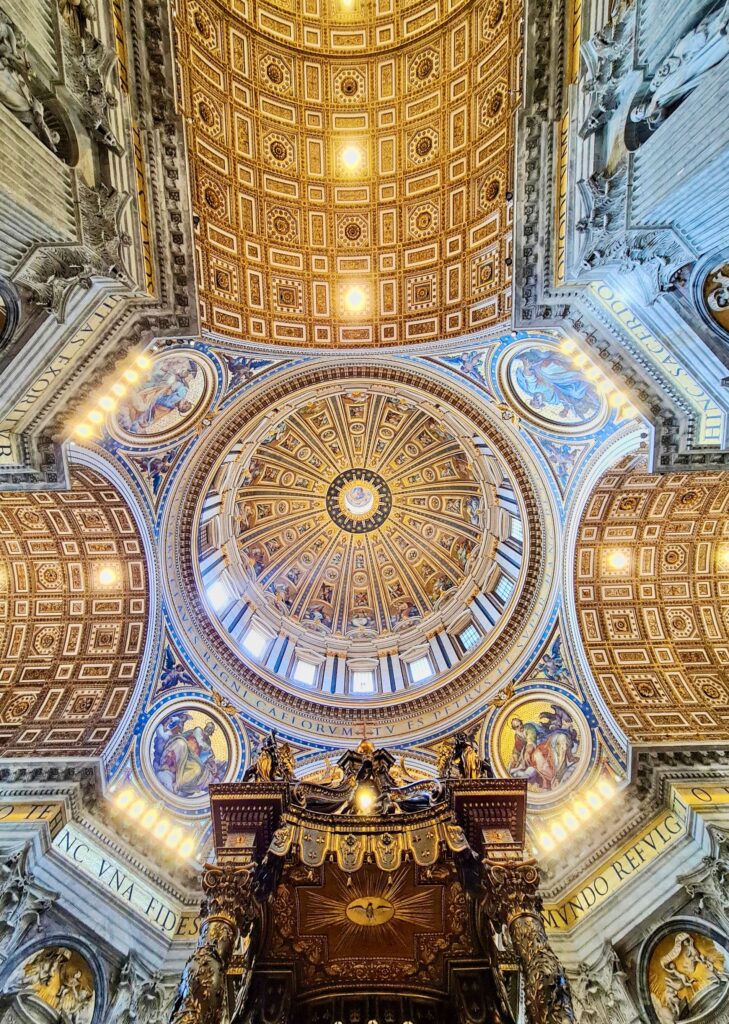
But Bramante died in 1514. Not much had been built at that juncture.
His design didn’t survive either. In fact, it was radically altered by a string of architects fiddling with the blueprint.
Raphael briefly took over as chief architect until dying at the young age of 37.
Then, Antonio Sangallo the Younger (Bramanate’s assistant) stepped in from 1539-46. He made some important changes, elongating the eastern arm. He substituted a Greek cross plan for a Latin cross plan.
3. The Architect Michelangelo
When Sangallo died in 1546, the great Michelangelo stepped in at the ripe old age of 71. As with the Sistine Chapel, he wasn’t thrilled about taking on the project.
Michelangelo inherited a train wreck of a construction project, with ruins and scaffolding. But, over 17 years as St. Peter’s CEO, he created an icon.
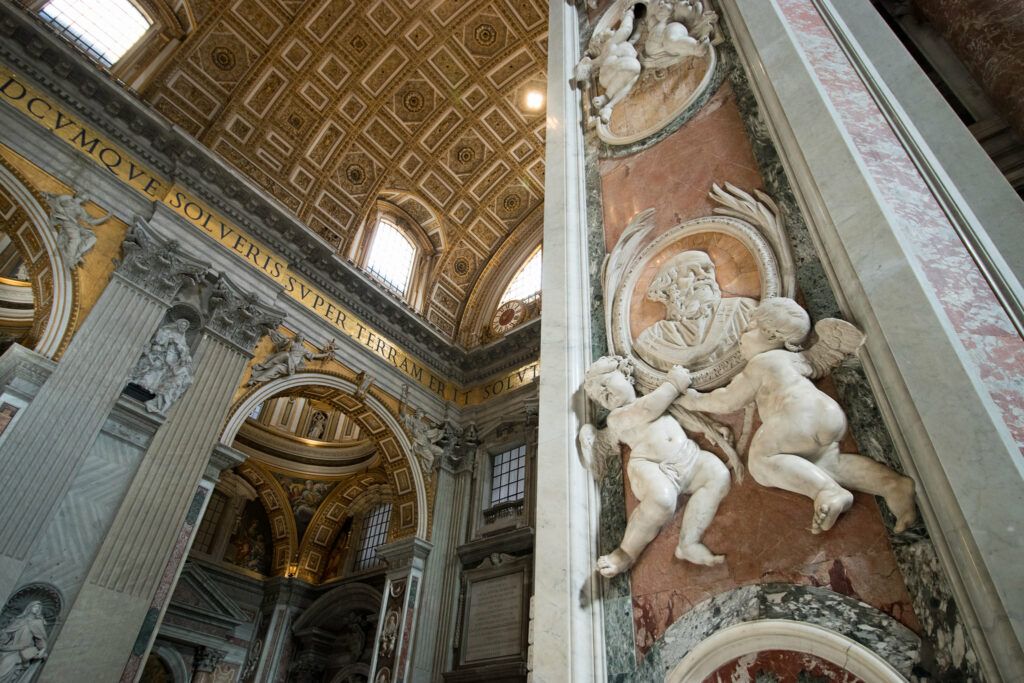
Michelangelo simplified the architectural plans, using a colossal order of architecture. He designed parts of the dome, the crossing space, and three sides of the exterior. He left a 15 foot model of the dome.
Michelangelo’s original plans for the dome were later altered. So it’s not really technically accurate to call it “Michelangelo’s dome,” as everyone seems to say.
When Michelangelo died in 1562, construction of the dome had reached the drum level. His proposed dome exterior was altered fairly significantly by Giacomo della Porta.
He turned a hemispherical dome into a more slender and elegant melon shaped dome. And he accomplished the task in 22 months.
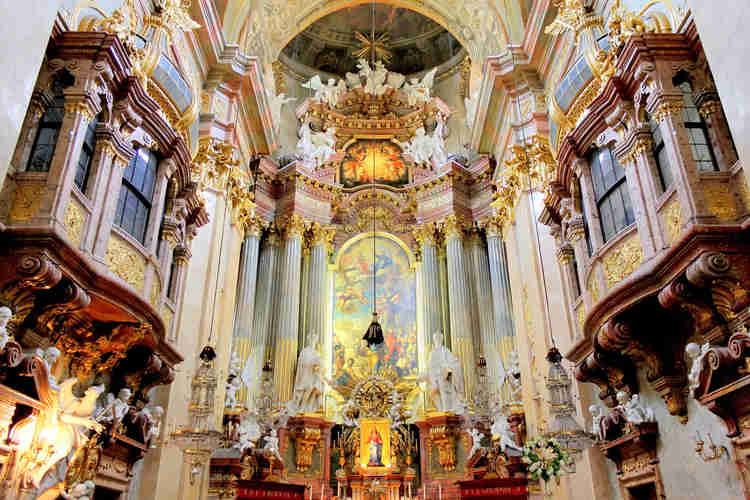
4. The Architect Maderno
After Michelangelo’s death, his interior plan was changed too. In 1621-26, the basilica’s last architect, the Swiss-Italian Carlo Maderno, substituted an elongated nave.
It was practical. Maderno’s basilica plan could hold large numbers of people. The elongation also focused attention on the all important Baldachin and altar.
5. The Facade
Maderno also added the grand colonnaded facade, built from 1617-12 at the request of Pope Paul V. Initially, Maderno was criticized for designing a “wedding cake” palace-like facade, rather than a church facade.
But Maderno designed it that way so it wouldn’t obstruct the dome, though the dome is still somewhat obscured from well out in St. Peter’s Square.
Eight columns support the upper attic on which thirteen 18 foot marble statues stand.
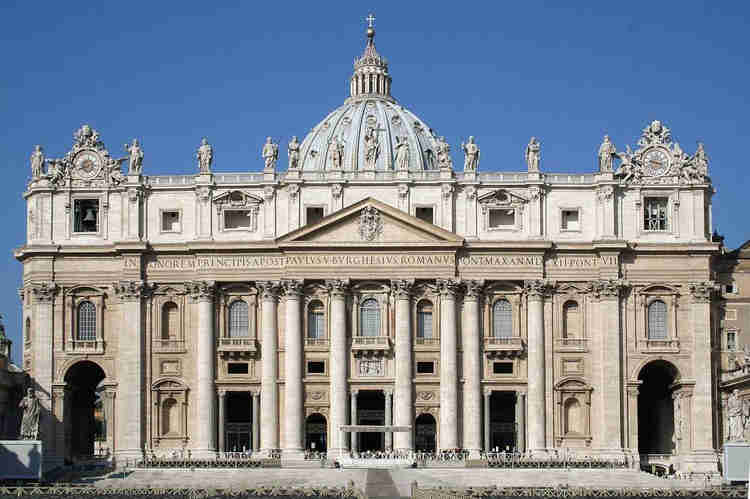
Emblazoned across the facade is the name of a Borghese pope, who unfortunately and shamelessly carved his own name above the entrance.
The central balcony on the second floor is known as the Benediction Loggia. This is where the pope delivers a speech upon his election.
6. Bernini and the Baroque Era
In the Baroque era, the inside of St. Peter’s was transformed, giving it it’s current overwhelming decorative appearance. There’s no trace of the Renaissance inside.
The greatest artist of the Baroque, Gian Lorenzo Bernini, decorated the interior. He contributed the imposing Baldachin, a monumental bronze canopy over the high altar. And he contributed a multitude of stunning sculptures.
His most famous sculpture is the Chair of St. Peter, which is located in the apse of the basilica. This monumental sculpture represents a symbolic chair and features rays of light and cherubs.
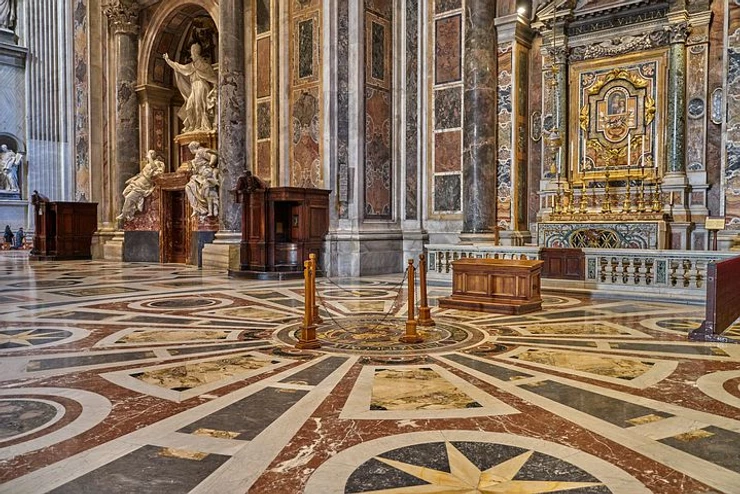
Perhaps Bernini’s greatest contribution was the beautiful piazza, St. Peter’s Square. It’s lorded over by hundreds of statues of biblical figures and saints created by Bernini’s workshop.
Since that time, the basilica has undergone many restorations to preserve its beauty.
And that’s a wrap for my history of St. Peter’s Basilica. You may find these Vatican City guides useful:
- Masterpieces of the Vatican
- Guide to the Vatican Pinacoteca
- Guide to the Vatican’s Raphael Rooms
- Guide to the Sistine Chapel
- Underpants in the Sistine Chapel
- 1 day itinerary for Vatican City
- Hidden gems in the Vatican
- Famous sculptures in the Vatican
If you need a history of St. Peter’s Basilica, pin it for later.

